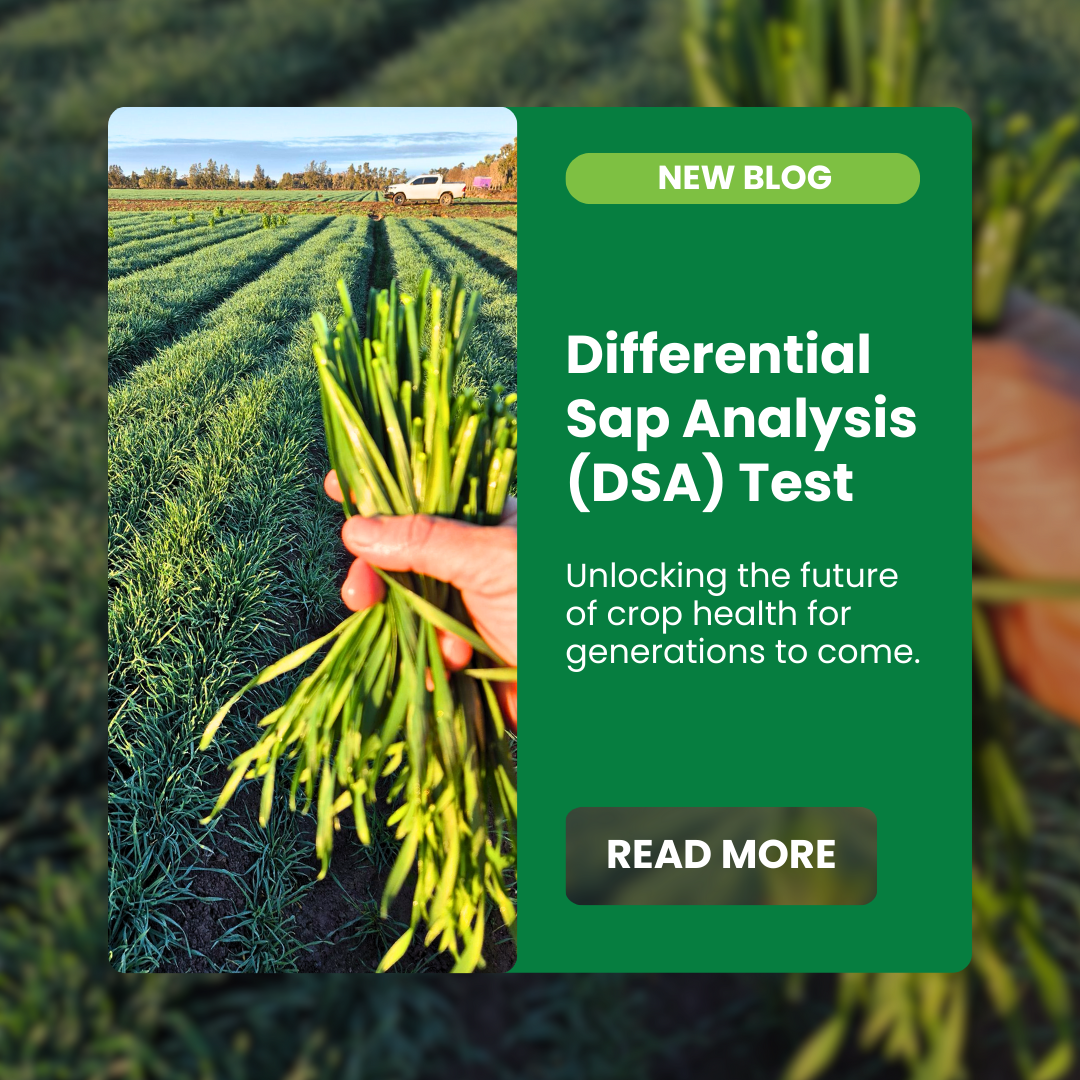The Differential Sap Analysis (DSA) test is the most cutting-edge way to determine plant nutrient status, 2-3 weeks earlier than ash methods.
BASIC FACTS
Understanding the nutrient levels in plant cells is crucial for evaluating crop health.
THE DIFFERENTIAL SAP ANALYSIS (DSA)
The DSA test is a unique approach in agricultural science for assessing plant nutrient status. In this test, the nutrient levels in the older leaves of a plant are analysed separately and then compared with those in the younger leaves of a plant.
In addition, advanced technology is then used to extract the cellular fluid from the leaves to analyse nutrient levels, as opposed to traditional methods where the leaf matter is dried down, and the dry matter is investigated.
LEAF SAMPLE COLLECTION
To ensure precise nutrient analysis, samples are collected from both young and old leaves, excluding the petiole (nutrient transport pipeline).
DSA ADVANTAGES
- Dynamic nutrient assessment: Comparing the sap test results from different age leaves provides insight into nutrient movement and utilisation.
- Early detection of imbalances: predict possible nutrient deficiencies or excesses before they become visible or cause problems by comparing nutrient levels in old and young leaves.
- Tailored fertilisation strategies: allows immediate nutrition strategy adjustments based on plant requirements.
- Comprehensive nutrient analysis: Besides the macro and micronutrient analysis, sugar content, pH, and EC are assessed.
- Nutrient Movement Analysis: monitors nutrient distribution in plants, including moving mobile elements like nitrogen and less mobile elements like sulphur.
- Crop nutrient management can be significantly improved by combining what was learned from DSA and soil tests.





